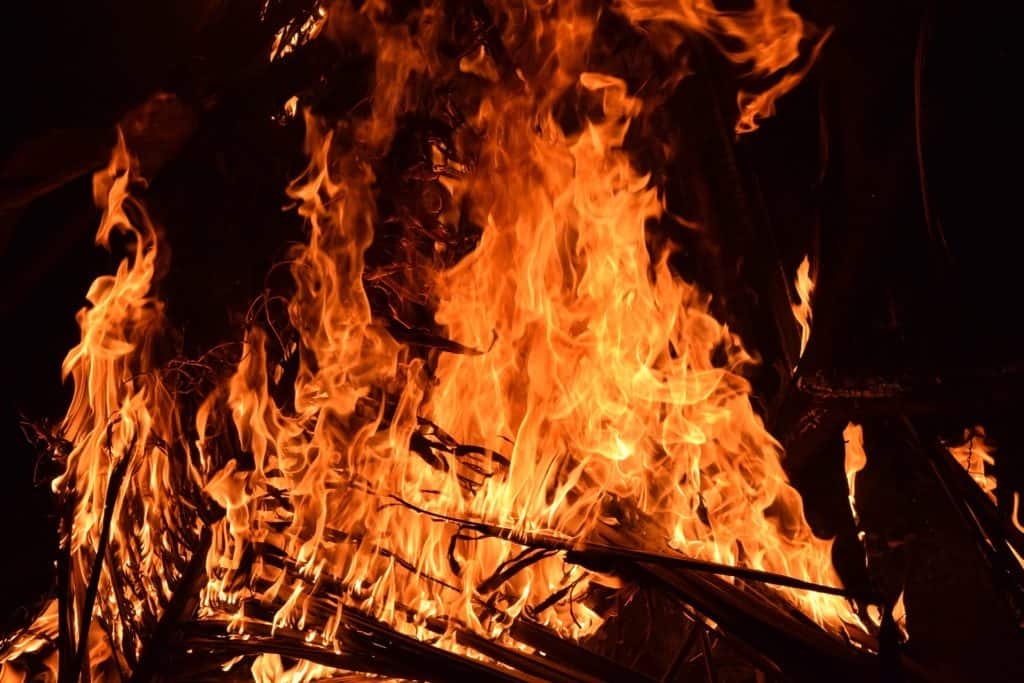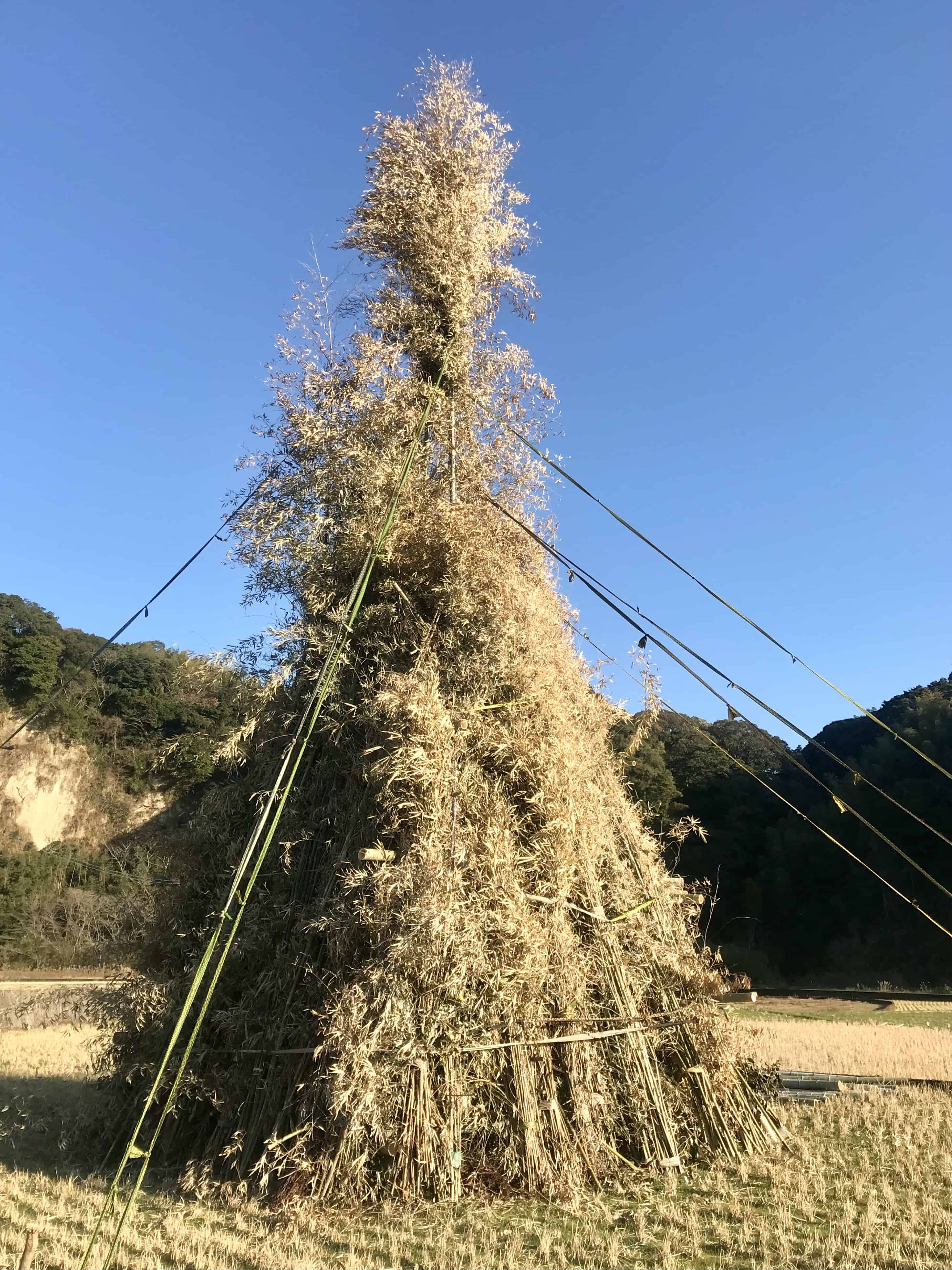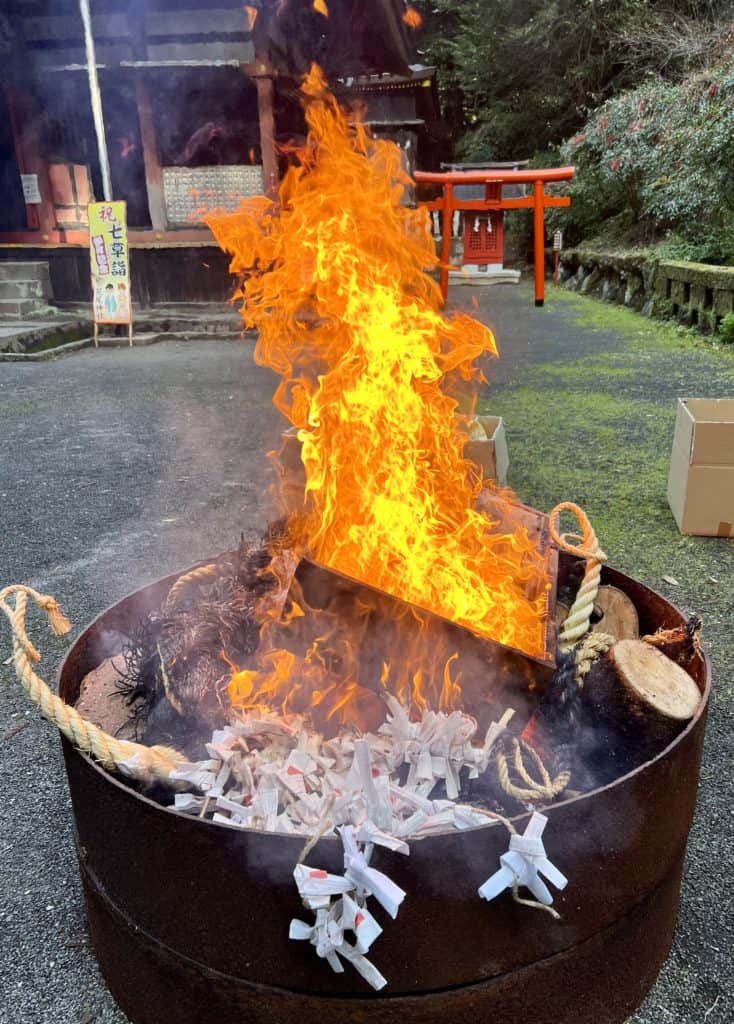Bonfires blaze across the countryside of Japan in early to mid-January each year

Dondoyaki, どんど焼き, sometimes called Sagichō, 左義長, are great bonfires where communities gather to burn their New Year‘s pine and bamboo decorations while sending the Toshi-kami, the God of the New Year, back to the realm of the spirits. This event marks the end of the New Year’s festivities.
This custom finds its roots in the Heian Era (794-1185) ceremony of Sagichō, 左義長, where aristocrats would gather at the imperial court and burn their New Year’s decorations in a carefully constructed bonfire on the top of which were hung a folding fan or tanzaku, long narrow strips of paper upon which wishes are written. A diviner would sing as the fire raged.
The sacredness of the fire led to the belief that being touched by sparks would ensure health and vigor for the year. Burning the first calligraphy of the year was a sure way for the gods to help the writer improve their skills. And as the fire died down, eating delicious dango rice dumplings and mochi roasted on the embers would protect from sicknesses during the year.
As the centuries passed, this custom made its way to the common people, and it is how people came to celebrate Dondoyaki today.
The bonfires are usually held around January 15th, a day traditionally called Koshōgatsu, 小正月, Little New Year’s Day. Although local customs respect different dates for Koshōgatsu, that day marks the end of the New Year’s celebrations. A variety of events are held across the country on Koshōgatsu — from people dressing as demons and scaring children into good behavior to peacefully eating rice gruel mixed with adzuki beans. But the most universal is Dondoyaki.
Dondoyaki

In early January, using a wide space within the grounds of a shrine, a rice field, or an empty lot, communities gather new bamboo, straw, and branches and build a tower-like pile that will be the base of the bonfire.
On the day of Dondoyaki, people bring their new year’s decorations, noshi wrapping paper from winter gifts, and the children’s first calligraphy of the year to be tossed into the flames. Simply throwing those things away is considered to be disrespectful and terribly unlucky. Using them as a means to send off the Toshi-kami is best.
Roasting mochi
As the fire dies down, young and old alike put pieces of mochi rice cakes on sticks and roast them in the fire like marshmallows, just as the Heian aristocrats did over 1,000 years ago. Sometimes the adults are served hot sake or, as in Kagoshima in the south, sweet potato shochu mixed with hot water.
Dondoyaki is not just a way to send off the Toshi-kami, but it is a wonderful way to strengthen community bonds — and enjoy nice warm roasted mochi.
There is one more fire during this period worth mentioning, and that is done exclusively by Shinto priests.
Burning the previous year’s amulets

On New Year’s Day or shortly thereafter, people pay their first visit to a Shinto shrine, called Hatsumōde, 初詣. People flock to shrines, both small and large, to bring their fuda household protection amulets, daruma dolls, and omamori lucky charms to be ritually burned by the Shinto priest. They pray for blessing, protection, success, and prosperity in the months to come. Then they line up to buy new omamori and fuda protection amulets for a fresh start for the new year.
To read about Kagoshima’s unique version of Dondoyaki, go to Giant Bonfires Banish Demons.
References:
図説民俗探訪事典 compiled by 大島 暁雄, 1982, kotobank, ウェザーニュース
If you have questions about Japan or suggestions for articles, please add them in the comments. For more photos and information on Japan, follow me on instagram at: https://www.instagram.com/more_than_tokyo/




